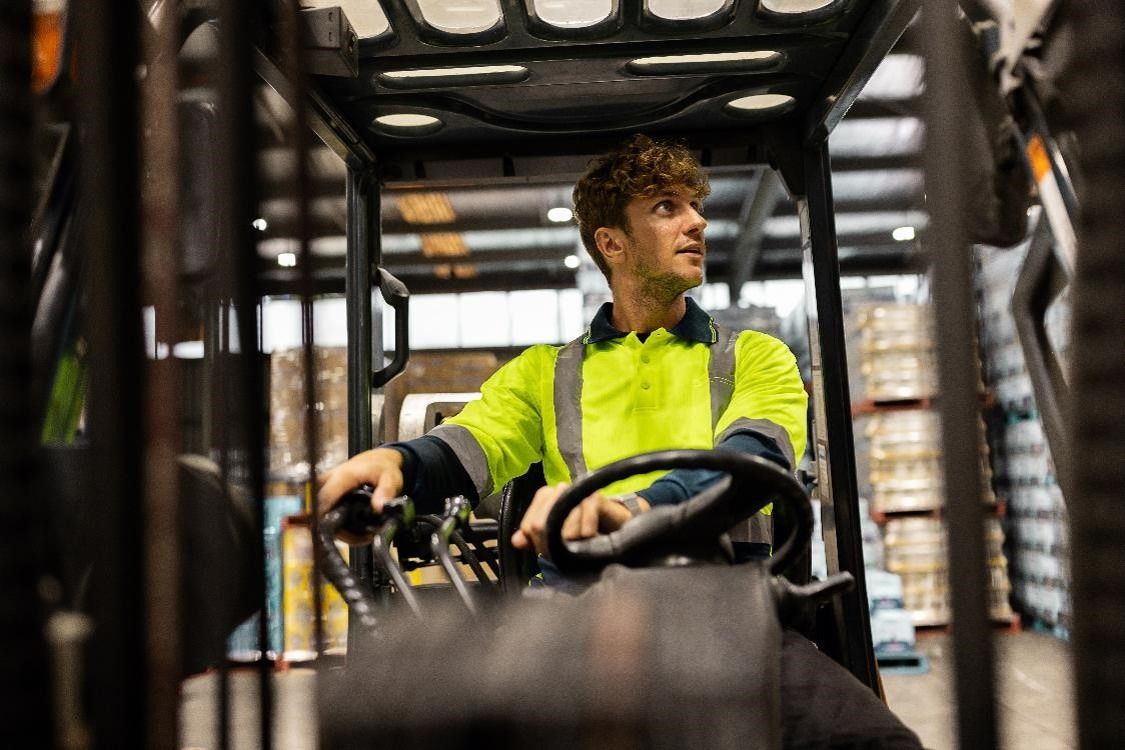Forklift Driver CV Template
Learn how to create a CV that supports your application for Forklift Driver roles, including tips on structure, skills, and experience.

When writing your Forklift Driver CV, there are a few things you should think about first, start with these writing tips, which will help your general understanding of what will make your CV stand out to an employer.
When writing specifically about a Forklift Driver job, make sure you pay attention to the skills and qualifications an employer has asked for in the job description, and make sure you talk about the relevant transferable skills you have that match what an employer wants.
1. Start with your personal statement to give an employer a brief introduction to your skills and employment history.
2. Follow with your work experience, listing previous roles in reverse chronological order.
3. Include a section for key skills and qualifications relevant to the role.
4. You can also include additional information such as hobbies or references, but they’re not as important.
How to Write a Personal Statement for a Forklift Driver
To write a personal statement that stands out, there are a few things you should do to encourage an employer to read the rest of your CV. Keep your personal statement around 100-150 words in length, this will help to keep the reader’s attention, and it will stop you from writing any unnecessary information.
Be brief when you explain what experience you have and what skills each job provides, as you will write about these things in more detail further in your CV.
Forklift Driver Personal Statement Example
“In my previous job as a Warehouse Worker, I became proficient at basic forklift driving work, as it was part of my job to collect items from high places within the warehouse. This opportunity to learn was offered to a selected number of workers who were trusted to take on this extra responsibility.
I was chosen because of my excellent spatial awareness and inventory management skills which I had developed over years of experience to the point where I was exceeding my target goals.
I enjoyed the additional responsibility, which is why I’m looking to join your company, to make forklift driving a more permanent part of my role.”

Ideal Work Experience for a Forklift Driver CV
Some jobs are ideal for this position, as they will provide the transferable skills that an employer wants to see. If you have experience in any of these jobs, write about them in the section about your work experience.
Which Jobs to Include
Any sort of Forklift Driver job will be a boost to your CV, but any job that provides health and safety awareness and adaptability in a warehouse environment will be a bonus. This might include Picker Packer roles or Mail Sorting. Many different places offer skills in problem-solving, spatial awareness, inventory management and hazard awareness.
Forklift Driver CV Work Experience Example
When adding your work experience to your CV, use bullet points to separate 5-6 relevant job roles you’ve had that offer valuable skills.
-
Warehouse Worker at [company name] from [start date] to [end date]
-
I learned the basics of Forklift Driving through voluntary training which I have since used when necessary.
-
I learned the proper use of PPE and when I need to wear it. I would always follow safety protocols to make sure myself and my colleagues were safe.
-
I became proficient in memorising the locations of items so that I could locate them quickly for transfer. I would also enter data into the warehouse management software to make sure there were no discrepancies.
Key Skills & Qualifications for a Forklift Driver CV
An employer will outline which skills and qualifications they expect a candidate to have before they apply, these skills may come from different places such as previous work experience, apprenticeships, or educational facilities.
Important Skills for a Forklift Driver
A lot of what a Forklift Driver needs concerns health and safety. Employers may expect you to have a thorough understanding of forklift controls, proficiency in manoeuvring a forklift in different ways, and strong hand-eye coordination.
A Forklift Driver will also need to have hazard awareness to avoid potential hazards, and it’s important to follow all relevant safety protocols.
Qualifications Needed to Be a Forklift Driver
Although you do not need a formal driving licence to drive a forklift, you must have accredited training and certification which is available from many places including in-house training and external training courses.
Training courses cover a range of experience from novice, experiences, and refresher training, and will cover different types of forklift driving, such as a counterbalance forklift truck, or a reach forklift truck.
Additional Content to Boost Your Forklift Driver CV
Once you have written all the important details about your qualifications and skills, you might want to mention any hobbies or interests that have helped you develop some soft skills. Now is also a good time to add any references to your CV.
Hobbies & Interests
If you have hobbies and interests that improved your communication skills, problem-solving skills, or physical fitness, you can write about them now. This section should be short, but it’s useful for an employer to know what you enjoy doing outside of work. This might be gym or sports related, or volunteer work, if it has helped to develop relevant skills, you can talk about it.
References
If you’re thinking about including references in your CV, it’s best to add them at the end. Your references should be people that held a higher position than you in your workplace, such as a manager, or line manager. They should also be able to talk about your positive work attitude and any notable achievements.
How to Make a Forklift Driver CV Stand Out
There are a few essential ways to make your CV stand out, starting with the layout and structure of your CV. Make sure you section your information with titles such as “education & qualifications” and use bullet points to list relevant skills and work experience. Making your CV easy to read is important to an employer who will be more interested in a well laid out CV.
Keep your sections brief and to the point, as writing in paragraphs will overwhelm your CV with information that an employer may not be interested in. It is better to write less than write about things that are irrelevant to the job.
Mistakes to Avoid
Avoid sending an application before you, or someone else has checked your CV for spelling mistakes, and grammatical errors, and to make sure that it’s easy to read. If an employer finds careless mistakes in your CV, they may think you’re not taking your application seriously, so it’s always best to check your writing.

Forklift Driver CV Example
After reading our writing tips, and this Forklift Driver CV guide, you should be ready to write your own CV. However, if you’re still not sure where to start, we also have a free CV template that will help you get started. This template is free and easy to download, so be sure to take a look.

